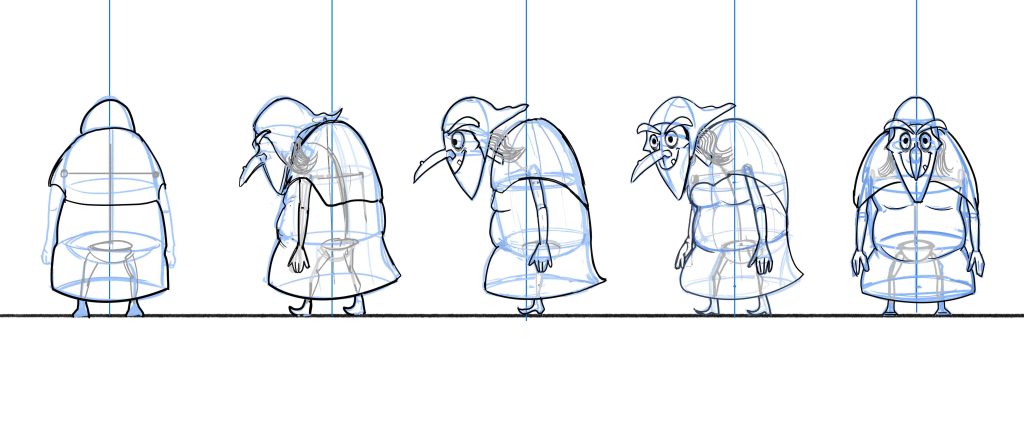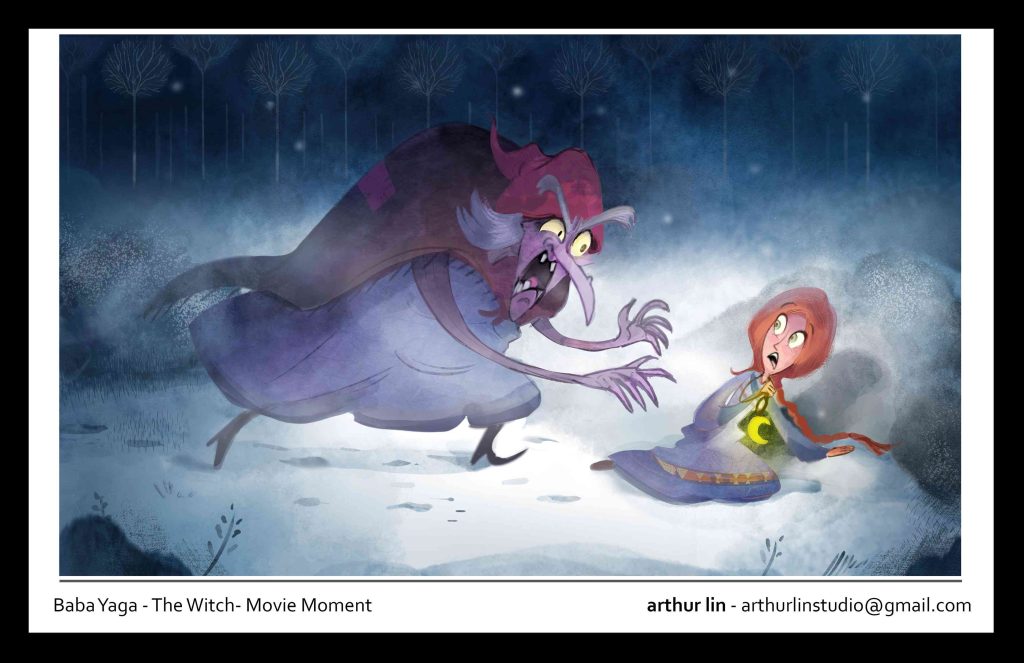Bringing Baba Yaga to Life
Children’s book illustrator Arthur Lin shares how he took inspiration from a Russian folk tale to create an evocative design with his Baba Yaga character for Nate Wragg’s Character Design for Production course.
Introduction
Hello! My name is Arthur Lin and I am a children’s book illustrator currently represented by Shannon Associates. I am a freelance artist who has worked with clients such as Houghton Mifflin, Random House, National Geographic, and Highlights, among others. I graduated with my master’s from the Academy of Art San Francisco in 2010. My family originates from Taiwan, but I was born and raised most of my life in California.
As my very first class since graduating from art school, I felt I needed to push my artistic skills further to work as a character designer in a company. I’d heard great things about CGMA and wanted my work to be looked at by an industry professional. During the semester, I was mentored by Nate Wragg, who is an art director at DreamWorks. The course was designed as a comprehensive breakdown of a production pipeline, which allowed me the opportunity to imagine myself working in a role at an animation studio.
Designing a Character With a Story
For the first assignment, we were asked to create a character that we would work on for eight weeks. Starting off, I knew I couldn’t draw any generic character, but rather I had to discover an individual with many layers and complexities to their personality. Fortunately, the assignment aligned with a book commission I was working on based on Russian Fairy Tales. The stories had many characters to choose from, but I was intrigued by one in particular: Baba Yaga.

Baba Yaga is a witch who is both terrifying and powerful. She hides in a hut in the forest and scares all children who dare to approach her. Interestingly, she is also described as kind in some tales, where those with enough courage to find her will gain her wisdom. Although many try, Baba Yaga will normally trick the individual in order to test their worth.
In reading these stories, I felt the character’s motivations and traits perfectly aligned with what I wanted to discover in a character.


Starting off the process, my goal was to create an interesting design based on the character’s traits of being very imposing and mischievous. As I began to draw her, I wanted to make sure that her posture was pushed in a way that made her feel very cunning and intimidating. During the sketching phase, I went through several variations in which I finally selected one I was happy with.
My main sources of inspiration mostly derived from old children’s books from the 1950’s; in that era, the designs of the characters were very simple. The use of contrasting shapes was so effective it would read from a mile away. I also did a lot of photographic research in which I picked and chose important elements I could borrow for the design.

Pose and Expression Sheet

Creating poses and expression sheets was definitely my favorite part of the class. In these small moments, we could make the characters feel much more animated and alive. In choosing poses and expressions, I drew segments of the story where I imagined the character reacting strongly to certain scenarios. In many instances, Baba Yaga would feel frustrated or sometimes she would concoct evil plans in her mind. This idea of eliciting a reaction really helped me push the storytelling element and the motives I felt the character needed.


During the process, it was also important to find the poses that didn’t work. With some trial and error, I often found myself rejecting certain emotions that seemed too “neutral”. Instead of an “angry” pose, I went with “extremely furious” to really sell the idea. As storytellers, it is important to put ourselves in the role of the character and think about how we could act things out more.
Model Sheet

I found that creating a model sheet was an essential part of the pipeline, in that it would serve to assist animators in understanding the character from various angles. It was a great experience in helping me understand a sense of spatial awareness for the character and making sure certain areas were consistently aligned. Keeping every area consistent was a constant challenge, as I had make sure things flowed rather than appearing wonky.

One of the biggest surprises I also found was dealing with individual areas that needed special attention. For example, the nose and eyebrows would have to exist on a specific axis and would have to move together with the base of the head. Thinking about these areas helped me understand how we should always remind ourselves to simplify and think of these areas as only 3D shapes.
Although creating turn-around sheets was very time consuming, I found it to be a tremendous tool for whenever I would need to reference the character again.
The Hero Pose
In creating Baba Yaga’s hero pose, I wanted to make sure that the pose fully conveyed the character’s mischievous nature. In this pose, I wanted it to feel as if she was hiding behind her prop, as well as her expression.
On deciding a prop, I simply chose her broom as it was mainly one of the items she was always carrying with her. Although she doesn’t fly on the broom specifically; rather she sits in a mortar and wields the broom as she travels.

Putting It All Together
In creating a movie moment, one of the most important scenes dealt with Baba Yaga’s encounter with a young girl named Vasila. Vasila was traveling through a dark forest to seek wisdom from the witch. She is terrified when she first encounters the witch as she must find a way to gain her trust.
When coloring the scene I wanted to make sure to vignette it so that the viewer would focus on the important moment between the characters. The sparse snowy environment along with the frigid temperatures of Russian mountain lands was a perfect catalyst in setting the mood.

Conclusion
Overall, I really enjoyed my mentorship and feedback given by my instructor Nate Wragg. During the semester, it was always apparent that Nate would drive the concept of storytelling as the most fundamental part of creating a believable character. It was important to sell our ideas to our audience and really make our characters feel as if they could exist in reality.
Before taking this class, I always thought I should force myself to make picture-perfect artwork in one shot. But during the semester, my philosophy changed as Nate would always drive home the idea of trusting the process and forcing yourself to make mistakes before anything becomes perfect. Following his direction further strengthened my art process and now I feel I make better decisions than ever before.
After going through the process of a production pipeline, it really helped me understand the intricacies of creating an interesting and engaging character. I realized that as a designer, I would have to make smart and bold choices to keep pushing the design as much as possible. Going through this process allowed me to loosen up and constantly keep coming up with new ideas until I found the perfect solution.
As the class ended, I gained much needed valuable insight into what the industry expects from you in these roles. I am especially thankful for taking this class and all the wonderful feedback that my instructor shared with me.
















